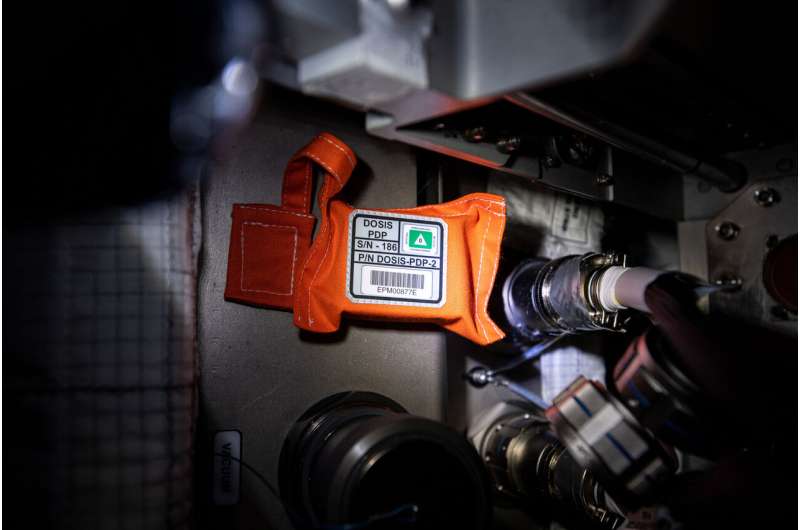Soyuz MS-17 delivers science experiments to ISS

The Soyuz MS-17 spacecraft arrived to the International Space Station just three hours after launch on 14 October, with Roscosmos astronauts Sergei Ryzhikov and Sergei Kud-Sverchkov and NASA astronaut Kate Rubins on board.
Aside from the human cargo, the Soyuz had space for some science, including one of ESA's longest-running experiments, Dosis-3D.
Dotted around the International Space Station, these orange pouches collect information on radiation levels using a device called a dosimeter. The experiment, in different forms, has been monitoring radiation levels since 2009 and the current pouches are changed after each six-month crew rotation. This pouch has been placed on the left side on the Utility Interface Panel next to the Vacuum Connector on ESA's Human Research Facility in ESA's science laboratory Columbus.
Radiation levels in space can be 15 times higher than on Earth. As soon as humans leave the protective shield that is Earth's atmosphere, space radiation becomes a serious concern. As we explore farther and head towards the Moon and even Mars on longer flights, defending ourselves against radiation becomes ever more important.
Dosis-3D helps researchers understand space radiation and how it penetrates the Space Station walls. Active and passive radiation detectors are used to map radiation in all modules, and will help designers and engineers make future spacecraft more resistant to radiation, such as the modules for the lunar Gateway.
Experiments like Dosis-3D often go overlooked as they sit passively in the corner, but as we approach the anniversary of 20 years of continuous habitation of the International Space Station, they are great examples of the kind of science that occurs on humankind's outpost in space, and helps prepare for the future of human exploration.
The orange-wrapped dosimeters are about the size of a pack of playing cards and attach to the walls of the Space Station with Velcro. The detectors record how much radiation has been absorbed in total during the period they are in space.
In addition to the passive detectors shown, Dosis-3D uses active dosimeters that measure fluctuations in radiation levels over time. Data from all Station partners is shared to create as complete a picture of space radiation as possible.
Provided by European Space Agency





















